Table of Contents
We haven’t seen brand new Zenbooks for a while now, as the latest models Asus offers in stores at the time of this post are mostly updates of their Broadwell and even Haswell models, like the Zenbook UX305UA (13-inch, Core U Skylake, matte screen), Zenbook UX303UA (13-inch, Core U Skylake, touchscreen), Zenbook UX305CA (13-inch, Core M Skylake), Zenbook UX303UB (13-inch, Skylake Core U and Nvidia GT 940M graphics) or the Zenbook Pro UX501 (15-inch, Skylake Core HQ, Nvidia 950M/960M graphics).
Asus are however working on updated series of ultraportables for the second part of 2016 and first part of 2017, starting with the sleek Zenbook 3, a close match for the Apple Macbook, continuing with the Zenbook Flip UX360, a 13-inch convertible that will replace the Transformer Flip TP300 lines, the Zenbook UX310, a 13-incher with dedicated graphics, the Zenbook UX306, an improved follow-up of the UX305UA, or the Zenbook UX510, a portable and accessible 15-inch multimedia notebook.
I’ll tell what to expect from each line in this article, how much they cost and when they should be available in stores. If you’re reading the post in early 2017 or later, you’ll also find below updated details and links to our detailed reviews of these products.
Asus Zenbook UX310UA, UX310UQ and UX310UV 13-inchers
For the last couple of years, those looking for a compact notebook with dedicated graphics usually had to turn towards the Asus UX303 series, with Core U i7 processors and Nvidia 840M and later 940M graphics.
The Zenbook UX310UQ steps in as a successor of those popular models and offers a Core i7 Skylake U processor, support for DDR4 RAM and M.2 storage, but also an Nvidia GT 940MX graphics chip. All together make up for a decent update, at least until Kabylake processors or an Nvidia 1030 mobile graphics option will be unveiled.
If you don’t want the dedicated graphics though, the Zenbook UX310UA steps in as a follow-up for the UX303UA models.
There’s also a Zenbook UX310UV model, but I can’t tell you anything about it just yet.
| Asus Zenbook UX310UA / UX310UQ / UX310UV specs |
|
| Screen | 13.3-inch, 1920 x 1080 px TN or 3200 x 1800 px IPS (?), non-touch, matte |
| Processor | Intel Skylake Core i3-6100U, Core i5-6200U, Core i7-6500U CPUs |
| Video | Intel HD 520 + Nvidia GT 940MX (on the UX310UQ model) |
| Memory | up to 24 GB DDR4 (up to 8 GB soldered+ 1 slot) |
| Storage | 2.5″ storage bay and M.2 slot |
| Connectivity | Wireless AC, Bluetooth 4.1 |
| Ports | 2xUSB 2.0, 1xUSB 3.0, 1xUSB 3.1 gen1, HDMI, card-reader, headphone/mic |
| Battery | 48 Wh |
| Size | 323 mm or 12.71 in (L) x 223 mm or 8.77 in (W) x 18.35 mm or 0.72 in (H) |
| Weight | about 1.45 kg (3.2 pounds) |
| Extras | backlit keyboard, available in multiple colors |
Asus’s specs suggest two screen choices, either 1920 x 1080 px or 3200 x 1800 px non-glare (thus matte) panels with 100% sRGB / 72% NTSC color coverage, but only the latter is marked as IPS.
Update: As a few of you mentioned in the comments section, looks like the basic configurations only get a FHD TN panel.
Update2: There are also reports of a TN panel on the QHD+ display used on the UX310UQ as well. I cannot tell for sure whether IPS options are also available for any of the UX310 models, and while some stores (including Asus’s official one) might advertise IPS panels, chances are that’s a lit. Proceed with caution and try to ask the retailer more details on the panel, if possible, until more light is shed on this subject. And better yet buy from a store that accepts returns.
The novelty here is the Nvidia GT 940MX chip on the UX310UQ verison, but it’s too early to tell if that’s a major improvement over the 940M chip on the previous Zenbooks or not.
From what we know right now, Nvidia offers two versions of this chip, one with GDDR3 memory, and another with GDDR5 VRAM. The former version is expected to perform only marginally better then the Nvidia 940M chip, but the DDR5 version should offer 15-25% increased performance in games and other demanding graphics applications. So hopefully Asus will actually pick the DDR5 version for the 940MX chip for the Zenbook UX310UQ, otherwise this product isn’t going to turn many heads.
Update3: Reports in the comments mention the GDDR3 version of the Nvidia 940MX chip is used on the UX310UQ.
These aside, there are a few other aspects to discuss here. When it comes to the memory, the UX310UA can take up to 20 or 24 GB of RAM. From what I’m seeing, these laptops come with either 4 or 8 GB of RAM soldered on the motherboard and an extra spare slot that can take an up to 16 GB DIMM.
Details are even more confusing when it comes to storage, as the specs suggest that the laptop comes with both a 2.5-inch storage bay and an M.2 slot that would supposedly support NVMe speeds, based on some of the configurations listed online. The two storage options are confirmed, but I’ve yet to confirm the M.2 slots supports NVMe SSDs yet (let me know if you have any details on this matter). It makes sense to have dual-storage, since Asus shrunk the battery when compared to the UX303: the new model only gets a 48 Wh battery, and the design was also changed to some point.
The UX303s have a wedge shaped profile, with the front half thinner than the rear, but the UX310s get a more balanced profile, with the front and the back similar in height, like the Razer Blade or the Macbook Pros. However, the UX310 is a bit thinner than the UX303 and the specs also mention that it weighs 1.45 kilos (3.2 lbs), which is on par with the previous models. The aesthetic lines and choice in materials hasn’t changed much either. The lid cover, interior and edges are still metallic, available in a few different colors, with the bottom being made from plastic. The hood gets the rippled pattern characteristic to Zenbooks and the Asus logo in the middle.
On the sides, the IO was slightly redesigned. There are two USB 2.0 slots, one USB 3.0 slot and one USB 3.1 Type-C port, plus a full-size HDMI slot, an SD card-reader and a mic/headphone plug, and the PSU. The USB 3.1 and the HDMI connectors are on the left side, which leads to a less-cluttered right edge. Good job! There’s no Thunderbolt 3 support, as there’s only an USB 3.1 1st gen port on this laptop, limited to lower speeds.
Hopefully Asus addressed the dreaded hinge that shattered easily on the previous UX303 lines (Google it, you’ll see what I mean) and I’d also expect them to improve the typing experience. From the looks of it, the keyboard doesn’t seem much different from the previous Zenbooks and gets the same 1.6 mm drop. The trackpad is larger though, taller, and the palm-rest area is taller as well, as the keyboard is positioned a little higher on the frame and thus leaves more spare room underneath. This aside, the speakers are now placed on the belly, towards the front-side. Their cuts are larger than on the previous Zenbooks, but the fact that they fire downwards isn’t reassuring.
To wrap this up, from what we know so far the UX310 will be available in multiple configurations, with prices starting at around $699 (EUR700). The base Zenbook UX310UA model gets a Core i3 Skylake processor, 4 GB of RAM, a 128 GB SSD and a 1920 x 1080 px matte screen. Mid level configs get Core i5 processors and more storage space, while the top end models get the Core i7 processor, up to 24 GB of RAM and the 3200 x 1800 px matte screen. The Zenbook UX310UQ also gets the Nvidia 940MX graphics on top of all these.
Asus Zenbook UX410UA and UX410UQ 14-inchers
These are newer releases and base on what we know so far, it looks like Asus decided to put a 14-inch matte IPS screen on the 13-inch chassis used for the UX310 series. As a result, the UX410s get a very small bezel around the screen, as you can tell from the pictures.
The UX410 is a little thicker and heavier, weighing 1.6 kilos, but that’s 150 grams on top of the UX310s and I’m pretty sure many would gladly sacrifice this for the larger display.
That aside, we know there will be two UX410 variants, sharing the design, keyboard, screen options, etc. The UX410UA relies on the Intel HD 620 graphics chip integrated within the Intel Kaby Lake Core U processors, while the UX410UQ will get dedicated Nvidia graphics, most likely the GT 940MX chip also present on the UX310UQ.
The UX410 is already available in shops in some parts of the world, starting at around 900 EUR. You’ll find more about it from our detailed review posted here.
Check out the specs list below for more details.
| Asus Zenbook UX410UA / UX410UQ |
|
| Screen | 14.0-inch, 1920 x 1080 px IPS, non-touch, matte |
| Processor | Intel Skylake Core i3-7100U, Core i5-7200U, Core i7-7500U CPUs |
| Video | Intel HD 620 + Nvidia GT 940MX (on the UX410UQ model) |
| Memory | up to 20 GB DDR4 (4 GB soldered+ 1 slot) |
| Storage | 2.5″ storage bay and M.2 slot |
| Connectivity | Wireless AC, Bluetooth 4.1 |
| Ports | 2xUSB 2.0, 1xUSB 3.0, 1xUSB 3.1 gen1, HDMI, card-reader, headphone/mic |
| Battery | 48 Wh |
| Size | 323 mm or 12.71 in (L) x 223 mm or 8.77 in (W) x 18.95 mm or 0.75 in (H) |
| Weight | about 1.6 kg (3.52 pounds) |
| Extras | optional backlit keyboard, available in multiple colors |
Asus Zenbook UX306UA and UX330 allround ultraportables
The Zenbook UX306 is a thinner and lighter ultraportable than the UX310 mentioned above, built on the same Intel Skylake Core U hardware platform, but without any dedicated graphics options.
Update: Impressions on the Zenbook UX306UA are available in this dedicated post.
A Zenbook UX330 is also going to be available later this year, mostly identical to the UX306, but with two USB 3.0 slots and what looks like a slightly thinner body. You can find more about it in our review available over here.
Back to the UX306, let’s start with the design. It looks much like the UX310, with the exception that the UX306 is just about 13.5 mm thick, while the UX310 measures 18.5 mm. That’s without the rubber feet, so expect the UX306 to sit at around 15 mm tall on the desk. The front doesn’t get thinner, like on the previous Zenbooks, as these new models no longer get the wedge profile, but I don’t think that’s going to be a problem if that front lip isn’t sharp. We’ll see.
The Zenbook UX306UA is also lighter, weighing 1.2 kilos (2.65 lbs).
| Asus Zenbook UX306UA specs |
|
| Screen | 13.3-inch, 1920 x 1080 px or 3200 x 1800 px, IPS, non-touch, matte |
| Processor | Intel Skylake Core i5-6200U, Core i7-6500U CPUs |
| Video | Intel HD 520 |
| Memory | 8 GB LPDDR3 |
| Storage | M.2 SSD |
| Connectivity | Wireless AC, Bluetooth 4.1 |
| Ports | 1xUSB 3.0, 1xUSB 3.1 gen1, micro-HDMI, card-reader, headphone/mic |
| Battery | 57 Wh |
| Size | 323 mm or 12.71 in (L) x 223 mm or 8.77 in (W) x 13.5 mm or 0.53 in (H) |
| Weight | about 1.2 kg (2.65 lbs) |
| Extras | backlit keyboard, available in multiple colors |
These aside, the UX306 is paired with a 3200 x 1800 px IPS matte display (a 1920 x 1080 px IPS alternative is also available on the lower-specked versions), without an option for a touchscreen. The hinge is similar to the one on the UX310 and hopefully is going to prove more durable than on the older models. The keyboard and trackpad are also similar to the ones on the UX310.
The IO however is not. This laptop only gets one full-size USB 3.0 slot, a card-reader, a 3.5 mm jack, and USB 3.1 1st gen slot and one micro-HDMI port for video output. There’s no Thunderbolt 3 support and you’ll need adapters in order to get video onto a bigger screen. On top of that, the USB 3.1, the micro-HDMI connectors and the PSU are inconveniently placed on the right side.
Hardware wise, the Zenbook UX306 gets Skylake Core i3/i5/i7 processors and no dedicated graphics. However, I can’t give you exact info on the amount of RAM and type of storage. The models unveiled at Computex came with 8 GB of LPDDR3 RAM and a 512 GB SSD. Given how thin the laptop is, I’d expect the RAM to be soldered on the motherboard and M.2 SSDs to be used for storage, just like on the Zenbook UX305UA. I would have appreciated support for DDR4 memory and PCIe drives, but it looks like we’re not getting them here. We do get a pretty big 57 Wh battery, which should offer around 7-8 hours of daily use.
This Zenbook will be available later this summer, with a starting price of $799 for a base model with a Core i5 processor and 256 GB of storage in the US.
Bottom point, from what we know so far, the Zenbook UX306UA is an upgraded version of the Zenbook UX305UA, with a slightly lighter body, a backlit keyboard and an attractive price point, so I’d surely expect it to be very popular in the months to come. There’s a more detailed comparison between the two generations in this post.
Asus Zenbook Flip UX360 convertible
While the two Zenbooks above offer matte displays, the Zenbook Flip UX360s gets a touchscreen able to fold 360-degrees onto the back, which makes them a follow-up of the Transformer Book Flip series available in these last years.
The Zenbook Flip UX360s are available in two versions though, one powered by Intel Skylake/Kabylake Core U hardware, the UX360UA (review here), and another powered by Intel Skylake/Kabylake Core M hardware, the UX360CA (review here), which is not as powerful, but is fanless.
The base model of the UX360CA includes a Core m3 processor and should offer enough oomph for light daily activities, but if you plan to multitask or run a few more tabs in a browser at the same time, you’ll get a smoother experience from the Core m5 configuration.
| Asus Zenbook Flip UX360CA specs |
|
| Screen | 13.3-inch, 1920 x 1080 px or 3200 x 1800 px, IPS, touch |
| Processor | Intel Skylake Core m3-6Y30, Core m5-6Y54, Core m7-6Y75 CPUs |
| Video | Intel HD 515 |
| Memory | up to 8 GB LPDDR3 |
| Storage | M.2 SSD |
| Connectivity | Wireless AC, Bluetooth 4.1 |
| Ports | 2xUSB 3.0, 1xUSB 3.1 gen1, micro-HDMI, card-reader, headphone/mic |
| Battery | 54 Wh |
| Size | 323 mm or 12.71 in (L) x 220 mm or 8.66 in (W) x 13.9 mm or 0.54 in (H) |
| Weight | about 1.3 kg (2.86 pounds) |
| Extras | non-backlit keyboard, available in multiple colors, 1.6 W stereo speakers |
The Zenbook Flip UX360CA is already available in the US. Well, just the base version is, with the Core m3 processor, 8 GB of RAM and 256 GB of storage, selling for $699. Higher end configurations with Core m5 and m7 processors, 8 GB of RAM and up to 512 GB of SSD storage will be available in the near future. That base version sure offers plenty for the money though.
But what else you’re getting for your buck? Well, a convertible display for starters, as I mentioned earlier, with a 1920 x 1080 px IPS panel or a higher resolution 3200 x 1800 px option, both able to cover 100% os the sRGB gamut. There’s also a 54 Wh battery, so you should expect around 6-8 hours of daily use from this fellow. The build quality seems solid, as the Zenbook UX360CA is mostly made out of high quality materials, while the design, well, you be the judge of that. I’ll just add that the laptop weighs 2.9 lbs, is about 14 mm thick, and hopefully it’s goign to feel as sturdy in practice as beautiful as it looks in the pictures.
The IO is decent, with two USB 3.0 slots, one USB 3.1 Type-C port, micro-HDMI for video output, a card-reader and a 3.5 mm jack. Most of them are placed on the right edge though, just like on the Zenbook UX310.
One final aspect to mention here is the keyboard, with 1.5 mm drop and a chiclet layout. It lacks backlightning, which is probably the only significant nit one might actually have with this product.
The Zenbook UX360UA on the other hand is fan cooled (with a cooling grill on the side) and more powerful, but remains pretty much as thin and as light as the UX360CA. The IO is improved too, as this one actually gets a full-size HDMI port on the right edge. The keyboard is also backlit. See the specs list below and follow this link for our review of this unit.
| Asus Zenbook Flip UX360UA specs |
|
| Screen | 13.3-inch, 1920 x 1080 px or 3200 x 1800 px, IPS, touch |
| Processor | Intel Skylake Core i5-6200U, Core i7-6500U CPUs |
| Video | Intel HD 525 |
| Memory | up to 16 GB DDR4 |
| Storage | M.2 SSD |
| Connectivity | Wireless AC, Bluetooth 4.1 |
| Ports | 2xUSB 3.0, 1xUSB 3.1 gen1, HDMI, card-reader, headphone/mic |
| Battery | 54 Wh |
| Size | 321 mm or 12.71 in (L) x 219 mm or 8.66 in (W) x 13.9 mm or 0.54 in (H) |
| Weight | about 1.2 kg (2.65 pounds) |
| Extras | non-backlit keyboard |

The Zenbook UX360UA gets Core U hardware and a full-size HDMI port, but it’s even lighter than the UX360CA
Asus Zenbook UX560 15-inch convertible
As the name suggest, the Zenbook UX560 series includes notebooks with a 15.6-inch convertible display, and there are a few different models to choose from: the UX560UA, UX560UQ and UX560UX. Yes, confusing, especially since there are quite a few differences between them.
Fir of all though, let’s start with the similarities. These laptops get are mostly covered in metal, available in a Silver or a Dark Gray scheme. They look pretty sleek and well made, and they weighs around 2.2 kilos (4.85 lbs) and measure 22 mm (0.86″) in thickness. The back is made of plastic though. The hinges are small and we’ll have to see how they can deal with that 15-inch display, but Asus claims a redesigned mechanism that’s supposedly tough and reliable.
The IO is pretty good with 3xUSB 3.0 slots, one USB 3.1 gen 1 port, a full-size HDMI connector, a card-reader and 3.5 mm jack. There’s also Wireless and Bluetooth as connectivity options, and the cooling grills is placed on the laptop’s back edge, firing hot air away from users.
One other aspect worth mentioning is that these UX560s get a full-size keyboard with a NumPad section, but the keys are backlit, unlike on the smaller UX360 series.
These aside, let’s take the three different models one at a time.
The Zenbook UX560UA is the base model, powered by Intel Core i5-6200U or i7-6500U processor, with up to 16 GB of RAM and a 2.5″ storage solution. There’s also a 1920 x 1080 px IPS screen (72% NTSC) and a 50 Wh battery.
The Zenbook UX560UQ gets the same processor, memory and storage, but also an Nvidia GTX 940MX 2GB graphics chip, a 52 Wh battery and the option to choose between the 1080P panel or a higher resolution 3840 x 2160 px option.
The Zenbook UX560UX is indentical to the UQ, but adds the option for a PCIe SSD storage solution and comes with Nvidia GT 950M 2GB graphics.
The Zenbook UX560s should be available in stores in Q3 2016, with prices starting at around $700.
Asus Zenbook UX510 multimedia notebook
The Zenbook UX510 is more or less an oversized version of the Zenbook UX310 and UX306, and not a direct follow-up of the Zenbook Pro UX501.
Update: Our detailed review of the Zenbook UX510UW is available here.
And that’s because the UX510 is actually built on the same type of hardware as the smaller 13-inch Zenbooks: dual-core Skylake or Kaby Lake Core i5 and i7 processors, with support for up to 20 GB of DDR4 RAM (4 GB soldered, one DIMM), dual-storage (2.5-inch bay and M.2 slot) and Nvidia 950M or 960M graphics chips. There’s also a 48 Wh battery, rather small for a 15-incher.
| Asus Zenbook UX510UW specs |
|
| Screen | 15.6-inch, 1920 x 1080 px or 3840 x 2160 px, non-touch, matte |
| Processor | Intel Skylake Core i5-6200U, Core i7-6500U CPUs |
| Video | Intel HD 520 + Nvidia GTX 960M |
| Memory | up to 20 GB DDR4 (4 GB soldered+ 1 slot) |
| Storage | 2.5″ storage bay and M.2 slot |
| Connectivity | Wireless AC, Bluetooth 4.1 |
| Ports | 2xUSB 2.0, 2xUSB 3.0, 1xUSB 3.1 gen1, HDMI, card-reader, headphone/mic |
| Battery | 48 Wh |
| Size | 382 mm or 15.03 in (L) x 255 mm or 10.03 in (W) x 19.9 mm or 0.78 in (H) |
| Weight | about 2 kg (4.4 pounds) |
| Extras | backlit keyboard |
So judging by the specs, the UX510 is not a computer meant for intensive loads, video editing, programming or other complex tasks.
It is however a capable allround and multimedia notebook, that can also tackle some occasional gaming. As the name suggests, it gets a 15.6-inch display with a matte finishing. The specs point to what looks like a FHD (1920 x 1080 px ) TN panel, or a superior UHD (3840 x 2160 px) panel with 72% NTSC color coverage, clearly the much better option of the two.
Aesthetically, the Zenbook UX510 looks decent, pretty standard for an Asus notebook. Aluminum is used for the hood and the interior, while the underbelly is made from plastic, and the whole thing is around 20 mm thick and weighs 2 kilos (4.4 lbs).
This Zenbook also gets a backlit keyboard, again what looks like an oversized version of the keyboard found on the UX306, but luckily with black keys (yey, Asus learned about contrast). The IO includes four full-size USB slots and an extra USB Type-C 3.1 (not Thunderbolt 3) port, HDMI video output, a card-reader and a headphone/mic jack. The speakers are placed on the belly, just like on the 13-inch models mentioned above.
So there you have it, the Zenbook UX510 is just a large-format notebook with a good screen and decent hardware, a computer meant for daily use, multimedia and some gaming. The basic configurations of the Zenbook UX510UX are scheduled to start at $799, while the beefier UX510UW will start at around $999. Both are available in stores as of early summer 2016.
Update: Our detailed review of the Zenbook UX510UW is available here.

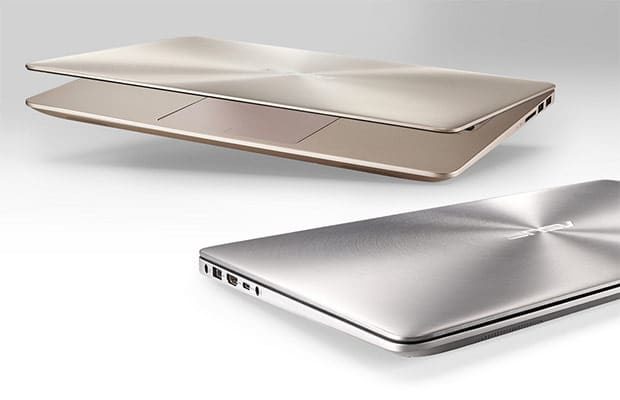
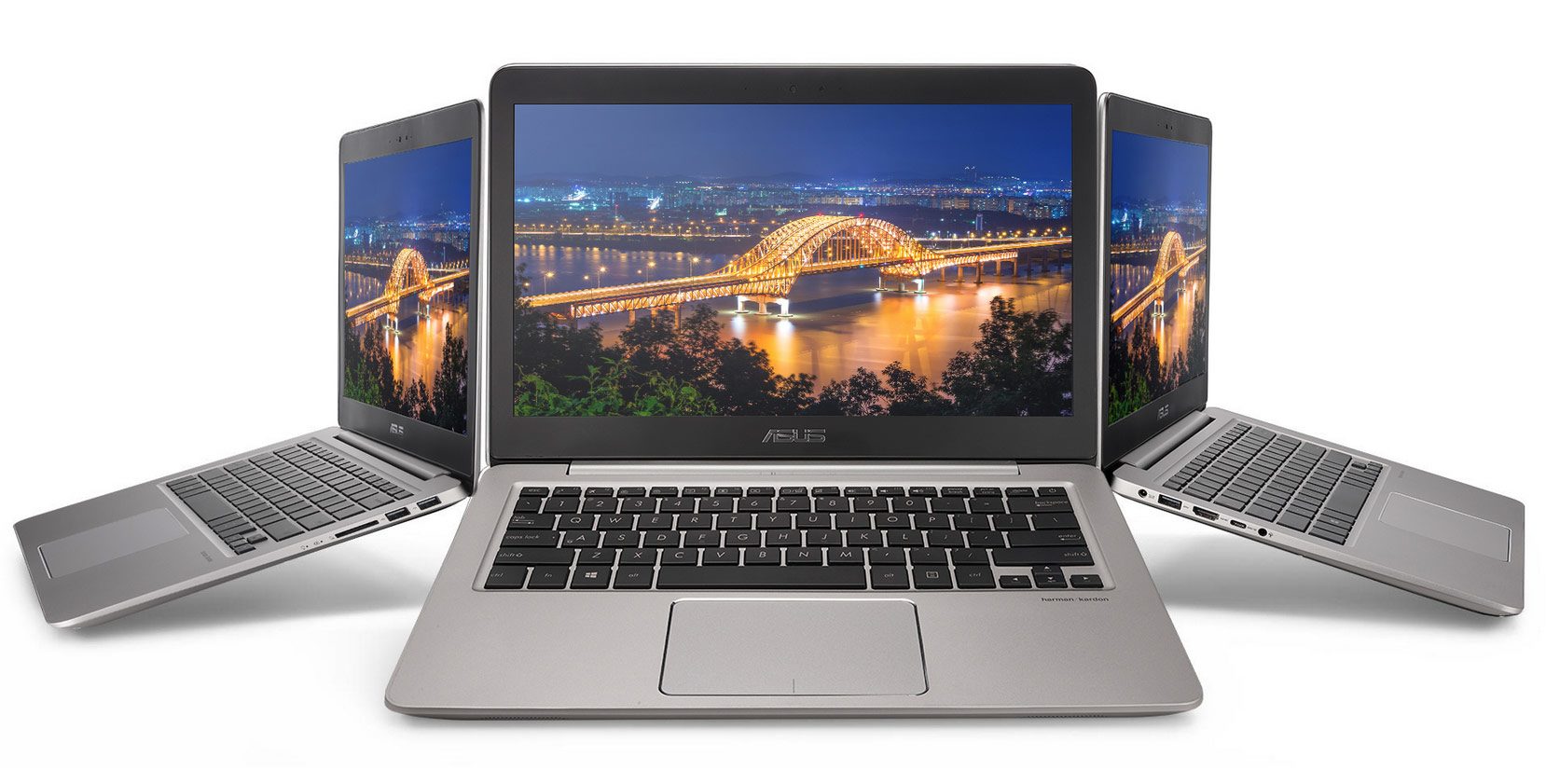
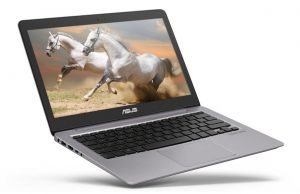
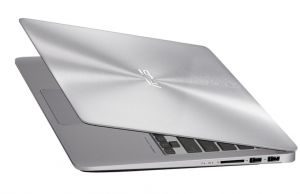
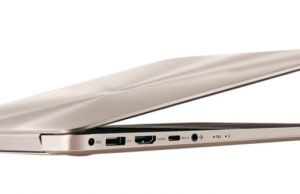
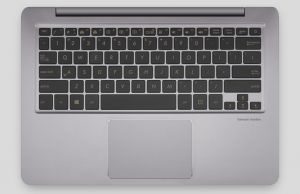
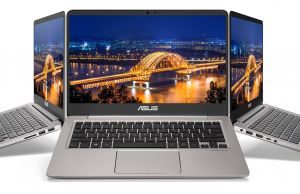
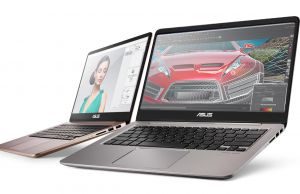
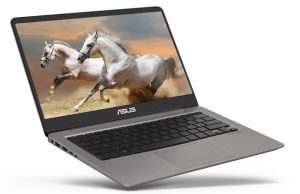
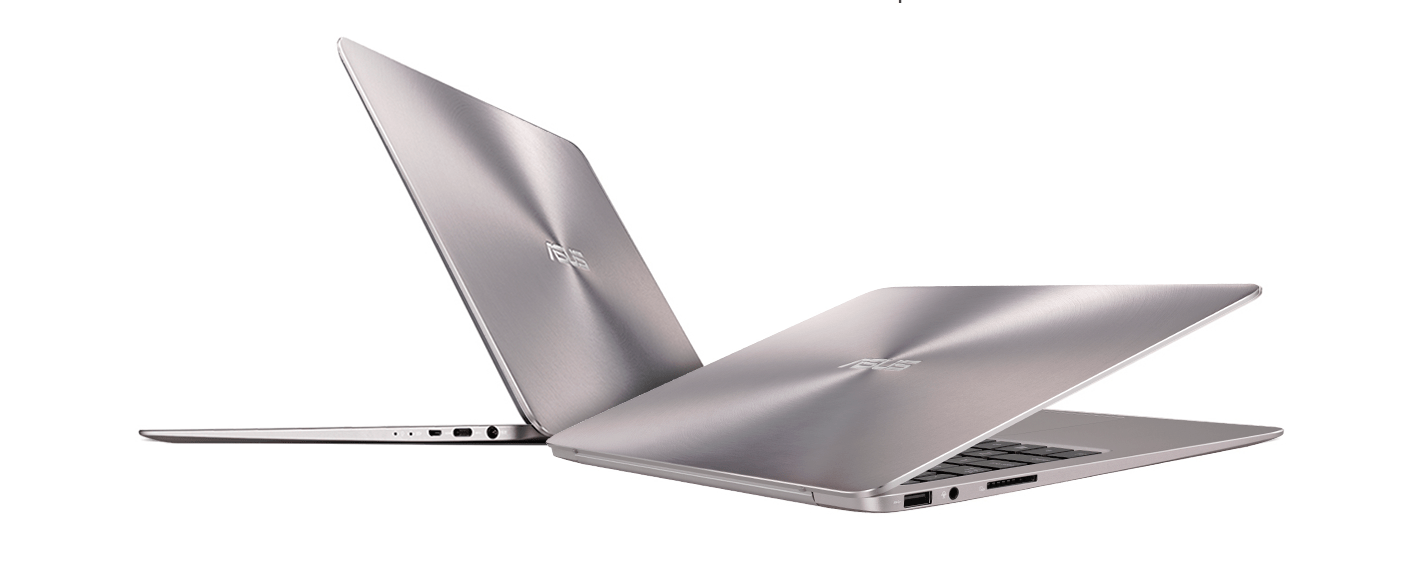
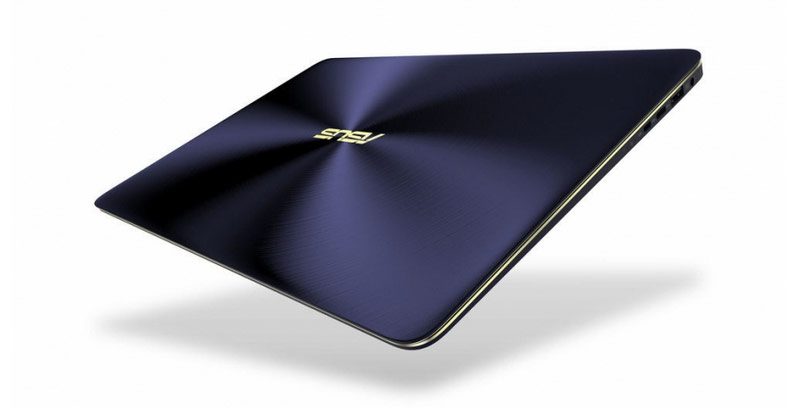
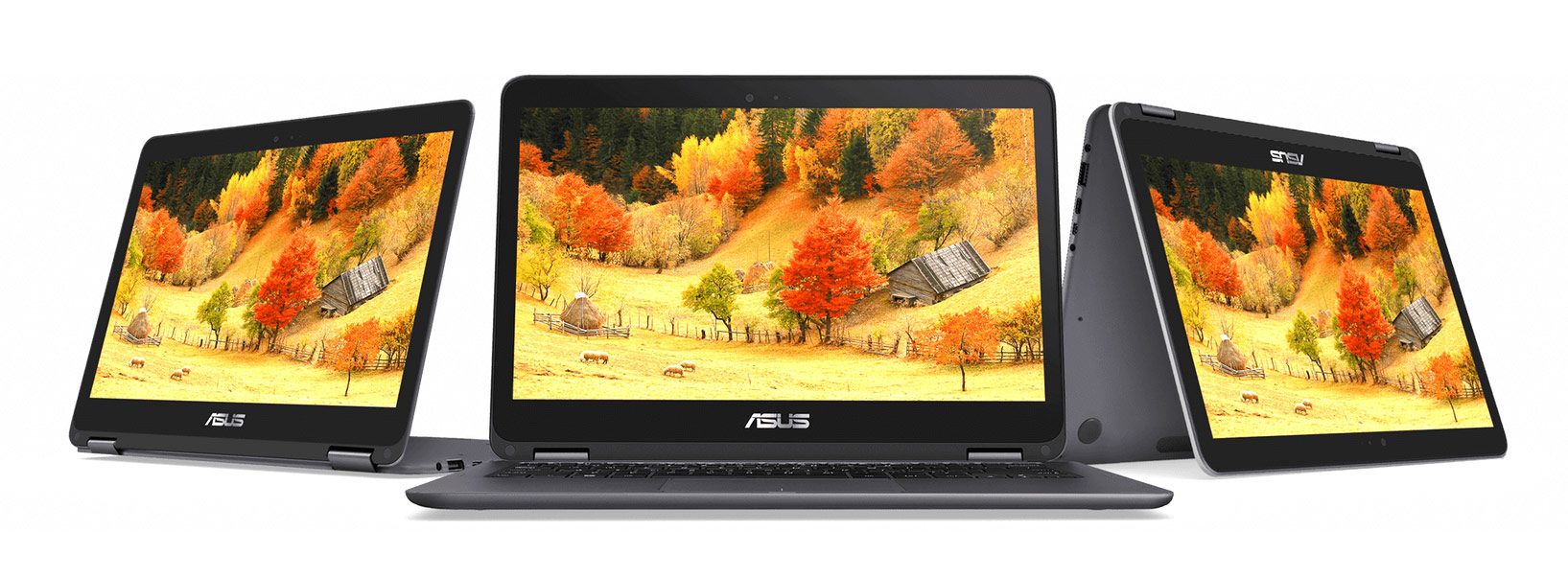
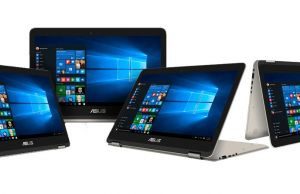
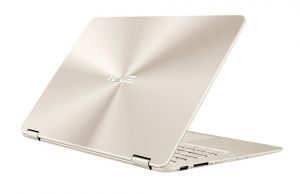
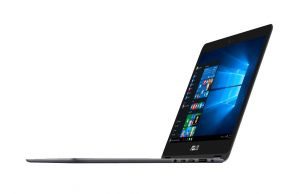
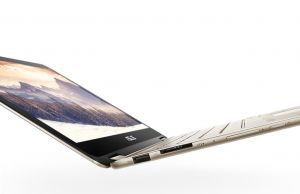
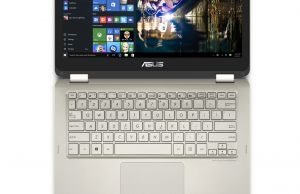
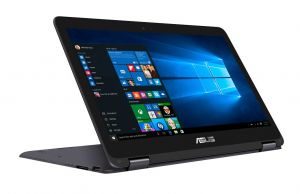
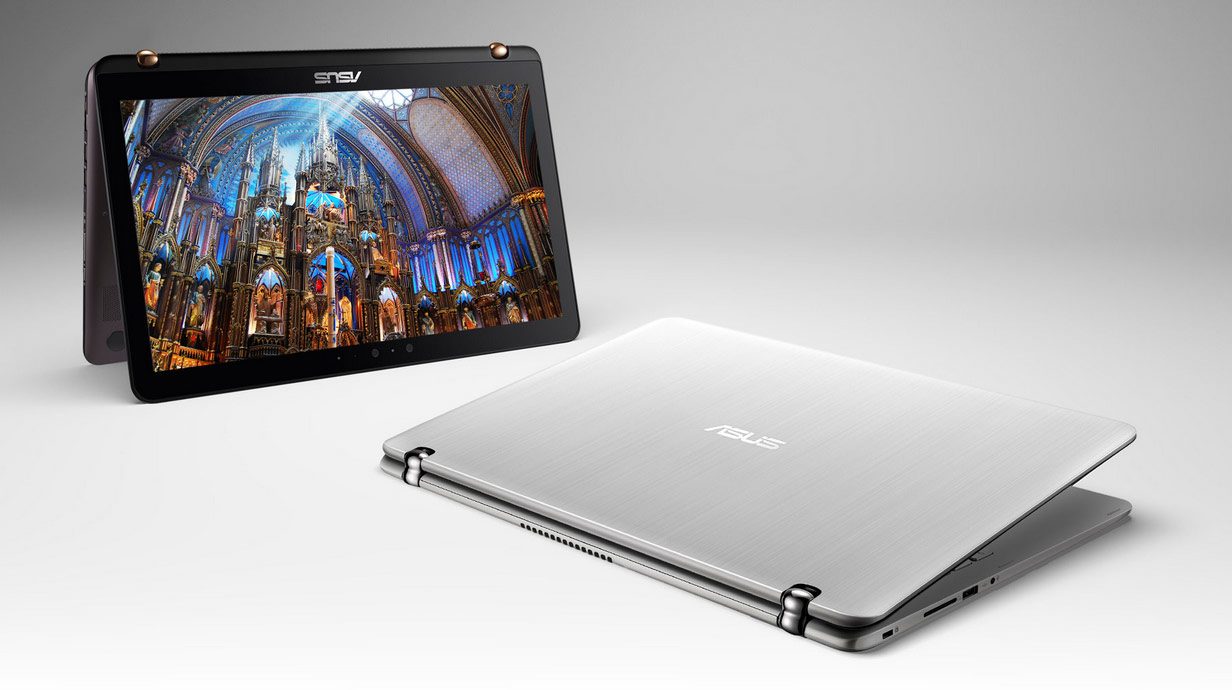
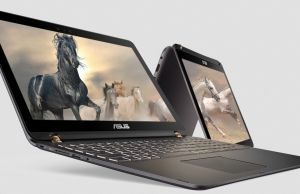
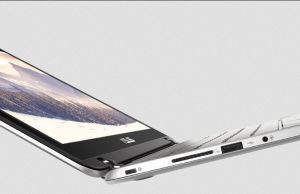
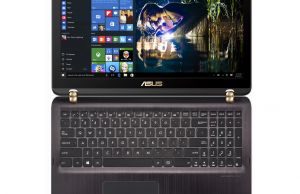
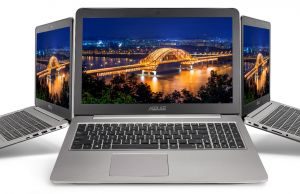
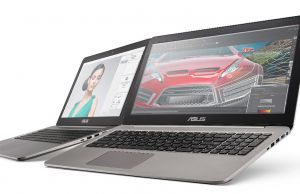
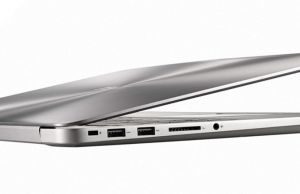
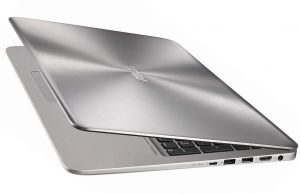

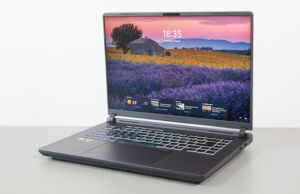
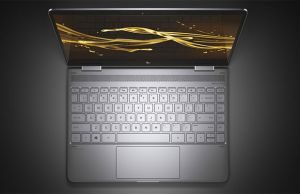
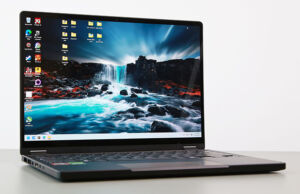
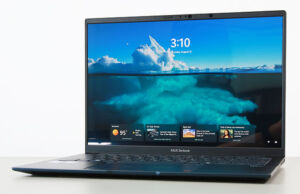
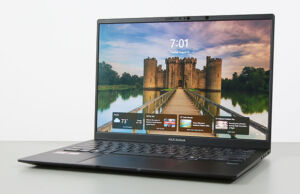
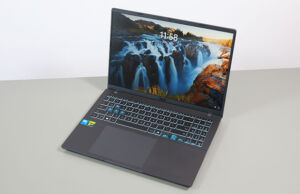
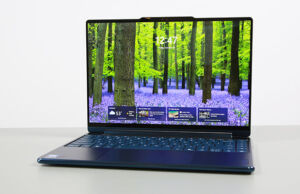

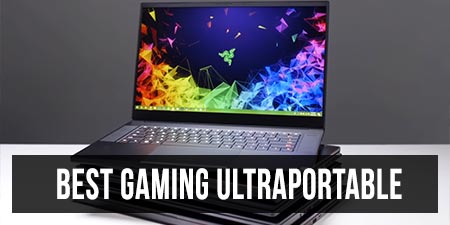
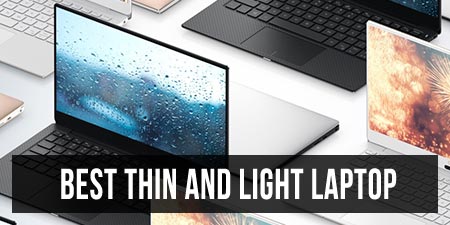
Peter Torok
April 27, 2017 at 5:43 pm
Hi Andrei,
Is there any information about the hinge of ux310/410? Do you know yet if Asus used the same low quality structure as for 303s or replaced it with some better? I would buy one of those ultrabooks except if the hinge is the same as before. Thank you for your help.
Andrei Girbea
April 28, 2017 at 1:45 am
I can't tell for sure. The part that attaches to the main frame is solid, metallic and big enough. The part that actually attaches to the screen was problematic on the UX303s, and I haven't pried it open on these newer models to check out, because it's a little more difficult to do without breaking the cover. I'd reckon there should be improved after all these years and also based on the fact that I haven't' seen other complains for the newer zenbooks like the UX305s, but I'm not 100% sure on that.
didnothing wrong
June 1, 2017 at 4:16 am
can you please pry it open to check if the hinge is still the same or not? please you are doing not just me but many people favor thank you very much
Alex
June 5, 2018 at 4:19 pm
i'd like to make a correction where you wrote that the underbelly of the ux510 is plastic. It should be made of aluminium. good review cheers